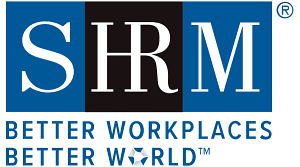Estimated reading time: 4 minutes
A long time ago, I wrote an article about how “creating strategy and being strategic aren’t the same thing”. We talk about creating strategies all the time, but where can we learn the components for being strategic? It only seems logical that we need to educate ourselves in this area because the better we are at being strategic, the better our strategies will be.
Well, the Society for Human Resource Management (SHRM) has partnered with the California Institute of Technology (CalTech) to create a credential program for human resources professionals. It’s called the SHRM CalTech Strategy Capabilities Credential.
SHRM gave me the opportunity to preview this program and share my thoughts with you. Before I share my takeaways from the program, let me tell you some details about the credential. The program has six online modules and is self-paced. It takes about 20-24 hours to listen to all the content. At the end of each module are a couple of multiple-choice questions to answer and at the end of the program, there’s about a dozen questions. You can earn up to 24 SHRM professional development credits (PDCs) after successfully completing the program.
Like the SHRM CalTech Advanced Technology Credential, each module is led by a CalTech faculty member who brings a wealth of practical experience to the content. In fact, while it wasn’t intentional, I thought there was a nice connection between this program on strategic capabilities and technology. I mean, let’s face it, to be successful in today’s business world, you need to know about both.
You might be saying to yourself, “Hey, this sounds great. But what are the strategic capabilities covered in the program?” Good question. Here are the six modules covered in the program.
- Innovation Frameworks: I really liked that this seminar started with a conversation about innovation and specifically how innovation can be fun. We often hear the phrase “innovate or perish” and that puts the pressure on and not always in a good way.
- Agility and Strategy: This seminar gave me a new perspective on agility. We sometimes think of agility as being flexible. Or maybe in the context of agile software development. The instructor of this module defined it as “thinking without boundaries”. A great tie-in to the previous module on innovation.
- Leading Change: We’ve all heard that the key to success is being able to manage change – whether that’s organizationally or individually. What I liked about this module was the conversation about moving from changes we are forced to make to changes that we want to make.
- New World People Manager: This module discussed the knowledge, skills, and abilities (KSAs) that people managers will need to effectively manage the new business world around us. I know that organizations talk about this a lot, but it’s possible that we sometimes only talk about the individual KSAs versus strategies about the whole.
- Future of Work: The final required module for the credential brings all the components together to discuss what types of strategies the organization needs to work on: organizational structure, company culture, operational processes, technology, and talent.
- The Mindset Skills that Define Marketing Excellence: There’s an optional module in this program focused on marketing. As HR professionals, it might be tempting to skip this because we’re not in the marketing department. But I’d recommended checking it out. I found myself several times during the module thinking about marketing to both candidates and employees.
As we approach year-end, we’re going to be asked about goals and objectives. We’ll be asked about the projects we want to work on the future. And we’ll be asked for status reports on existing strategies and programs. It’s a great time to focus on our strategic capabilities.
I remember reading an article years ago about what CEOs were looking for in future chief human resources officers (CHROs) and they talked about the need for HR to be more strategic. Then two paragraphs later, those same CEOs were asked what they were doing to make the human resources team more strategic … and they said nothing. (Not joking.) This is an opportunity to gain new skills or refresh existing ones. The need to be strategic isn’t going away.
SHRM and SHRM CalTech Strategic Capabilities credential logo used with permission
The post HR Professionals Can Learn How to Be More Strategic appeared first on hr bartender.





